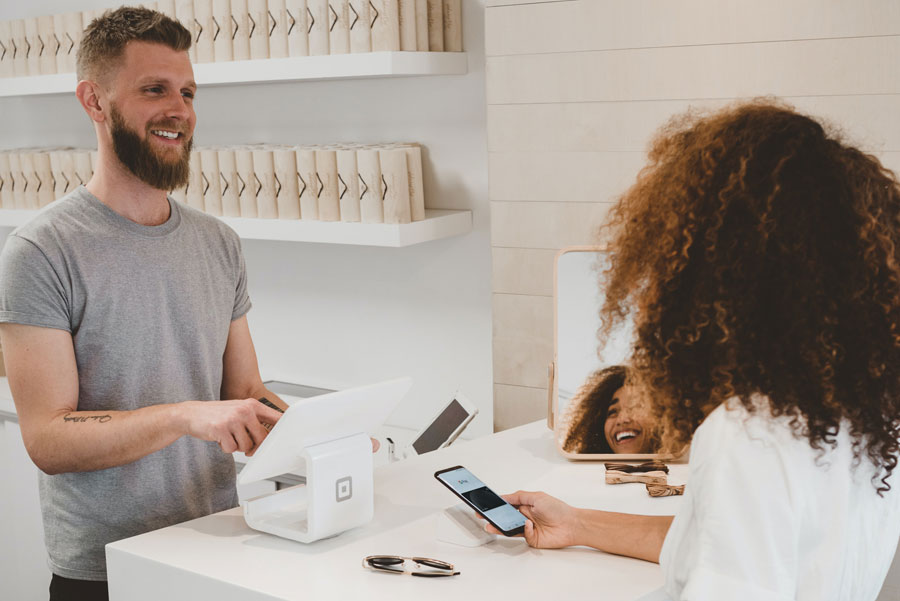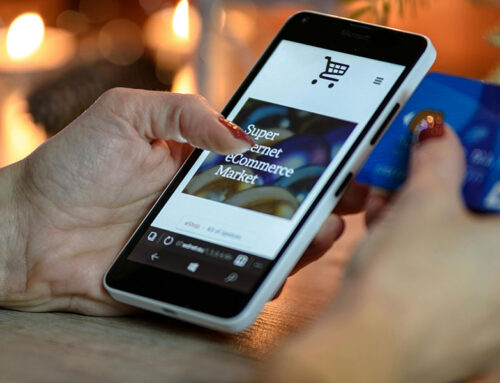Loyalty is earned, not bought. The same applies to customers—they may purchase your products and services now, but they’ll move on to another brand if it’s offering something much better.
At the same time, customers aren’t fickle. Just because another brand is better than yours doesn’t automatically mean they’ll move on from you.
There are other factors at play in helping them decide whether to leave or stay. And they would remain loyal if you have proven through the years that they can trust you.
So, if you want to retain customers and turn them into your brand advocates, you must learn how to develop and execute a customer loyalty strategy, starting with your websites. Below are seven ideas to help you get started.
#1 – Launch Customer Loyalty Programs
A customer loyalty program is a brand initiative that rewards customers who buy from and engage with your brand regularly.
Due to their constant engagement with and advocacy of your brand, the program rewards them with incentives and specific benefits.
Examples include points and perks that they can use on products, coupons, or perks like early access to the latest products. Take this idea even further and develop an SMS loyalty program to add immediacy to your loyalty efforts.
A successful customer loyalty program cultivates your relationships with your brand’s best customers. By rewarding customers advocating for your brand, you give them a reason to continue doing what they’re doing. Hence you are enhancing their customer experience for them to come back to you.
To set up a loyalty program on your site, you must first identify how to reward customers for their purchases and non-purchases. Allot points for each action to help them keep track of the points they get. Customers can then spend the accumulated points on the rewards available to them in the program.
Launching your loyalty program requires software like LoyalZoo, LoyaltyGator, and others. They will help keep track of the customers who signed up for the program, their accumulated points, and even a digital loyalty card they can use for every transaction.
#2 – Give Away Valuable Freebies
Another way to build goodwill with customers is to send them discounts and coupon codes before checking out products. You want to create a sense of urgency to encourage customers to purchase using them soon before it expires. Also, make sure not to send too many coupon codes as it could decrease the perceived value of your products.
Even if they aren’t customers yet, you can use coupon codes as an incentive to join your email list.
Once they sign up on your form with their name and email address, they will receive acode they can use to save on their first purchase on your site.
From here, they’ll receive the occasional email about the last discounts your store has that they can use.
One of the most valuable free things to offer customers and gain their loyalty is insider knowledge. Make them feel special with invitation-only events such as webinars hosted by company experts or special guests. You can show them new products before the public release, provide insights that make them feel more knowledgeable, and even invite their questions to engage with them directly.
#3 – Develop Knowledge Base
A knowledge base is a repository of documents containing answers to frequently asked questions by your audience and customers.
For example, if somebody reaches out to you with the same question that others asked, you can send them a link to a document in the knowledge base instead of typing the answer from scratch.
This way, you can free up more time for yourself and your support team to address more pressing concerns from other customers. At the same time, you provide a more in-depth answer to their question as the document should cover more ground regarding the topic at hand.
While a knowledge base is often seen as a customer service strategy, you can also use it to foster loyalty by addressing customers’ problems with your products and services. An extensive knowledge base is one way to do this.
Setting up a knowledge base is relatively easy. Software such as Zendesk and Notion work as content management systems to write and publish your documents.
People can then access these documents on a self-service portal to easily search the specific documentation for their concerns. Publishing them also allows search spiders to crawl and index them on Google, where they may appear as featured snippets that allow people to see your expertise at the moment they need it.
Finally, knowledge base software has feedback and built-in analytics features that allow customers to share their thoughts about the document.
They can give a thumbs up on documents that provide the answer they’re looking for a thumbs down on those that don’t. This helps you determine which documents you should work on improving moving forward.
#4 – Open Multiple Channels for Your Customer Service
In line with customer service as a way to build customer loyalty, you must open different lines of communication with customers for their questions and concerns.
As mentioned above, a knowledge base is an excellent foundation for your customer service initiative. However, customers would prefer having the answer given to them instead of searching for it in the knowledge base portal or Google.
In this case, you want to set up chatbots and live chat widgets on your homepage. The former is a tool that uses a workflow to simulate natural human-like conversation. Customers must choose the available options or type in their question or command, and the bot will process the data to provide you with the best and most appropriate response.
Chatbots don’t require a human to make it work, which is ideal for brands working with a skeletal workforce.
But if you already have an established customer support team, you can use a live chat widget instead. This enables customers to reach out to you with their preferred messaging platform. From here, one of your representatives must reply soon to answer their queries.
You can use the chatbot and live chat alongside your knowledge base. This way, the bot or your reps can just link to the most relevant document, thus making their jobs much more manageable.
Another tried-and-true channel is the ticketing system. It helps identify customer complaints by getting them to fill out a form with information about issues they encountered on your site or with their purchase.
#5 – Increase Personalisation
Another great way to build customer loyalty is to suggest the next best product available to them at your online store. You can do this by showing a product recommendation section on their dashboard when they are logged in.

The items in this section are based on their purchase history. Your site will then offer similar or complementary products available in your inventory that they must buy from you.
The product recommendation engine you’ll use will also consider the number of sales, views, and reviews of each product. This ensures that only the very best products will appear in the section, thus increasing the chances that customers will order from you again.
#6 – Send Abandoned Cart Emails
There are various reasons why customers abandon their shopping carts. Some of the reasons are customer-driven, i.e., they forgot, poor internet connection, no real plans of buying, etc. However, if your site is routinely loading slowly, it can discourage even highly loyal customers from coming back to finish their purchase or even shop with you again. This is why it is essential to invest in reliable web hosting to avoid slowdowns from putting a damper on your business by discouraging your customers.
But regardless of the reason, focus on sending cart abandonment emails.
When customers fail to check out their carts, you can set your marketing automation software to send an email reminding them that they could not clear the items in their cart.
Make sure to dispatch the email hours after they haven’t checked out their carts to give them time to decide before buying the items.

With this information, they can recover the cart and proceed with their purchase.
Abandoned cart emails help improve customer loyalty by staying on top of their needs. A simple reminder like this sent straight to their emails goes a long way in showing customers that they are your priority.
#7 – Analyse Customer and Audience Behaviour
Finally, the best way to establish customer loyalty is to know what your customers need and want. Taking a step further from sending cart abandonment and product recommendation emails, you need to deliver what they’re looking for before needing it.
To do this, you must put customer data into action. Using tools like Google Analytics, you can identify your top-performing pages based on traffic and conversion. The software also shows you referral sources to identify the places that drove lots of traffic to your site. Other data such as average time on page and conversion goals help you develop insights into improving their performance.
For example, if most of your traffic from one of your product pages is coming from social media, consider doubling down on this channel by launching a much better marketing strategy to drive more traffic to your page.
Next, to help you dig deeper regarding the conversion rates of your landing pages, you must use tools like Hotjar to determine which elements on the page they click the most.
The most successful responsive web design relies on information like this to create call-to-action (CTA) buttons that convert browsers into buyers, as well as other elements — such as size, copy, colour, and even placement of graphic elements — to make your site welcoming and easy to use, to boost visitor loyalty, and to increase customer click-through rates.
BONUS: Secure Your Website
Ensuring that your site is secure allows customers to put their faith in your brand, which further helps ramp up their loyalty to your business.
There are many ways you can prevent online threats from invading your site and stealing customer information. Below are the best ways to do it:
- Use hard-to-crack passwords on all your user accounts.
- Add HTTP/S and an SSL certificate to obfuscate all information entered and submitted from your site.
- Set up a security software like Virusdie or ASTRA on your website. This will set up a firewall on your site, scan it for malware, perform regular security audits, and may offer Pentest services
- to ensure that your site can endure any type of attack.
- Update all software installed within your site.
- Back your site up in case you need to recover your site.
- Make sure your customers know that you’ve taken extra steps to keep their personal data and transaction details secure, as this reinforces the trust factor that is essential to customer loyalty.






Leave A Comment